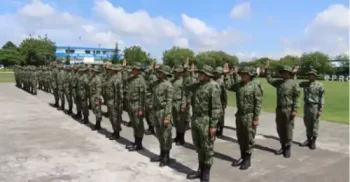
The Department of Budget and Management (DBM) has approved the release of ₱30.409 billion to fund the pension of military and uniformed personnel (MUP) for the first quarter of 2025. This significant allocation reflects the government’s commitment to ensuring financial support for MUP retirees and their families.
Breakdown of Fund Allocation
The DBM confirmed that the funds will be sourced from the Pension and Gratuity Fund of the 2025 General Appropriations Act (GAA). The release follows the completion of all required documentation.
DBM Secretary Amenah Pangandaman emphasized the importance of this initiative, stating:
“Matapos makumpleto ang mga kailangang dokumento, pinirmahan po natin ang pagpapalabas ng budget sa mga concerned agencies.”
(After all the needed documents were completed, we signed the release of the budget for the concerned agencies.)
Below is the detailed breakdown of allocations for various MUP agencies:
- Department of National Defense (DND)
- The Armed Forces of the Philippines (AFP) General Headquarters-Proper and the Philippine Veterans Affairs Office (PVAO) will collectively receive ₱16.75 billion.
- Department of the Interior and Local Government (DILG)
- DILG-attached agencies, including the Philippine National Police (PNP), Bureau of Fire Protection (BFP), Bureau of Jail Management and Penology (BJMP), and the National Police Commission (NAPOLCOM), are set to receive a total of ₱13.297 billion.
- Department of Transportation (DOTr)
- The Philippine Coast Guard (PCG) will receive ₱350.68 million, covering the pension of 2,836 personnel.
- National Mapping and Resource Information Authority (NAMRIA)
- A total of ₱8.530 million has been allocated for the pension of 34 retirees from NAMRIA.
A Lifeline for MUP Retirees and Families
The DBM reiterated that the allocation was based on the actual pension payrolls submitted by the respective agencies as of December 31, 2024.
DBM Secretary Pangandaman underscored the vital role pensions play in the lives of retirees and their dependents, stating:
“For many MUP retirees and their families, pensions are a lifeline that ensure their daily needs are met, katulad po ng pambili ng gamot o pagkain. Naiintindihan po natin, lalo na po ni Pangulong [Bongbong Marcos], kung gaano kahalaga na matanggap po ng ating mga pensioner ang benepisyo nila.”
(For many MUP retirees and their families, pensions are a lifeline that ensure their daily needs are met, like money to buy medicine or food. We understand, especially President Bongbong Marcos, how important it is for pensioners to receive their benefits.)
This allocation highlights the government’s efforts to prioritize the welfare of retired personnel who have dedicated their lives to public service.
Why This Funding Matters
The release of these funds demonstrates the government’s focus on:
- Ensuring Financial Security: Pensions provide a crucial safety net for retirees, helping them manage expenses such as healthcare and basic necessities.
- Upholding Commitments: This initiative strengthens the trust and morale of active personnel, knowing their service will be rewarded post-retirement.
- Efficient Budget Utilization: By basing the allocations on verified payroll data, the government ensures accountability and minimizes waste.

Advertisement
Frequently Asked Questions (FAQs)
Q: What is the total amount allocated for MUP pensions in Q1 2025?
A: The DBM has approved the release of ₱30.409 billion for military and uniformed personnel pensions.
Q: Which agencies will receive the funds?
A: Funds will be distributed to the AFP, PVAO, DILG agencies (PNP, BFP, BJMP, NAPOLCOM), PCG, and NAMRIA.
Q: What does this mean for retirees?
A: The allocation ensures that retirees and their families can meet daily expenses, such as food and medicine, through timely pension releases.
Q: How does this reflect the government’s priorities?
A: It underscores the government’s commitment to honoring the service of retired military and uniformed personnel while ensuring fiscal responsibility.
Disclaimer
The figures and statements in this article are based on official DBM releases and are subject to updates as more information becomes available. Readers are encouraged to verify details with government agencies for any clarifications.








